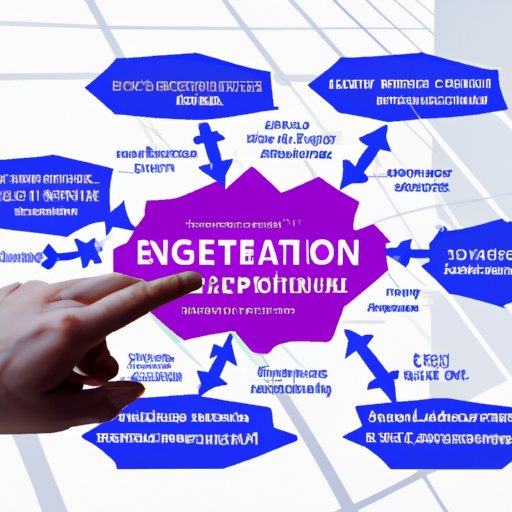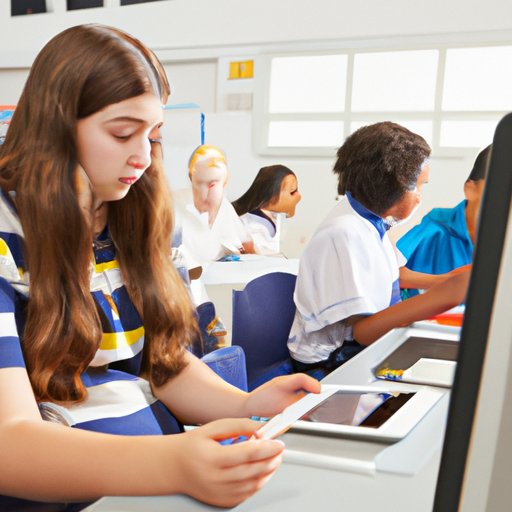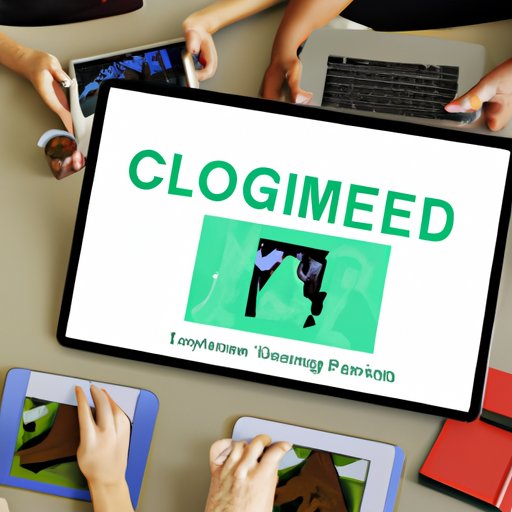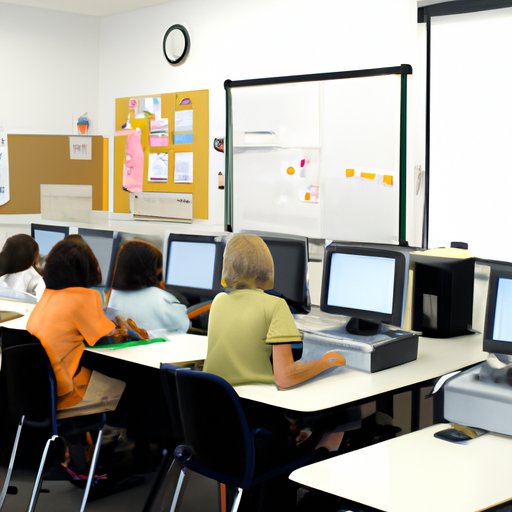Introduction
The incorporation of technology in the classroom has become increasingly common as schools strive to provide students with the skills needed for success in the 21st century. Technology integration is defined as the use of technology resources, such as computers and mobile devices, to support instructional objectives and promote student learning (Ertmer & Ottenbreit-Leftwich, 2020). When used effectively, technology can enhance student engagement, facilitate collaborative learning and improve access to information.
Identifying the Benefits of Technology in the Classroom
There are many potential benefits associated with the effective use of technology in the classroom. Understanding these benefits is essential for successful implementation.
Enhancing Student Engagement
Technology can help to engage and motivate students by providing them with opportunities to explore topics that they find interesting or relevant to their lives. According to a study conducted by Ertmer and Ottenbreit-Leftwich (2020), “students who were exposed to technology-rich instruction reported higher levels of intrinsic motivation and interest in the subject matter than those who were not.” Additionally, technology can provide students with opportunities to take ownership of their learning, allowing them to make choices about how and when they learn.
Facilitating Collaborative Learning
Technology can also be used to foster collaboration among students. Through the use of online tools such as discussion boards and wikis, students can work together to solve problems, share ideas and explore different perspectives. According to a study conducted by Yin and Wang (2018), “collaborative learning activities facilitated by technology can promote meaningful learning experiences and lead to better academic performance.”
Improving Access to Information
Finally, technology can improve access to information for both teachers and students. Online resources such as databases, digital libraries and ebooks can provide students with access to a wide range of materials that would otherwise be unavailable. Additionally, teachers can utilize technology to create digital learning environments, allowing them to expand their instructional repertoire and deliver content in new and innovative ways.
Creating a Technology-Friendly Environment
In order to successfully incorporate technology into the classroom, it is important to create a technology-friendly environment. This includes investing in quality equipment, developing appropriate policies and guidelines, and ensuring technical support.
Investing in Quality Equipment
The first step in creating a technology-friendly environment is to invest in quality equipment. This includes computers, laptops, tablets, projectors, and other technology tools. It is important to ensure that the equipment is up-to-date and can handle the tasks required of it. Additionally, it is important to ensure that there is enough equipment for all students to have access to.
Developing Appropriate Policies and Guidelines
It is also important to develop appropriate policies and guidelines for the use of technology in the classroom. These policies should outline acceptable uses of technology, as well as any restrictions or limitations that may be necessary. It is also important to provide clear instructions on how to safely and responsibly use technology.
Ensuring Technical Support
Finally, it is important to ensure that there is adequate technical support available for both students and teachers. This includes providing access to knowledgeable staff who can assist with any technology-related issues, as well as providing technical training for teachers.

Developing a Technology Integration Plan
Once the necessary infrastructure is in place, the next step is to develop a technology integration plan. This plan should include an assessment of resources and needs, setting goals and objectives, and establishing a timeline.
Assessing Resources and Needs
The first step in developing a technology integration plan is to assess the resources and needs of the classroom. This includes evaluating the current technology infrastructure, identifying any additional resources or equipment that may be necessary, and assessing the technical capabilities of both teachers and students.
Setting Goals and Objectives
Once the resources and needs have been assessed, it is important to set clear goals and objectives for the technology integration plan. These goals should be specific, measurable, achievable, and relevant to the classroom. Additionally, it is important to identify any potential obstacles that may impede progress and develop strategies to overcome them.
Establishing a Timeline
Finally, it is important to establish a timeline for implementing the technology integration plan. This timeline should include short-term goals for each semester or year, as well as long-term goals for the overall plan. It is important to monitor progress regularly and adjust the timeline as necessary.

Using Technology to Support Student Learning
Once the technology integration plan is in place, the next step is to start using technology to support student learning. This includes utilizing online resources, integrating technology into instructional strategies, and finding appropriate uses of technology.
Utilizing Online Resources
One way to use technology to support student learning is to utilize online resources. There are a variety of online tools and resources that can be used to supplement instruction, such as educational websites, interactive games, and digital textbooks. Additionally, teachers can use social media platforms to connect with students and provide feedback on assignments.
Integrating Technology into Instructional Strategies
Another way to use technology to support student learning is to integrate technology into instructional strategies. This includes using technology to facilitate group discussions, create multimedia presentations, and conduct virtual field trips. Additionally, teachers can use technology to provide real-time feedback and assessments to students.
Finding Appropriate Uses of Technology
Finally, it is important to find appropriate uses of technology. This includes selecting technologies that are age-appropriate, relevant to the curriculum, and conducive to learning. Additionally, it is important to ensure that technology is used to enhance, not replace, traditional instruction.

Encouraging Collaborative Learning Through Technology
Technology can also be used to encourage collaborative learning. This includes introducing group projects, exploring interactive technologies, and using social media.
Introducing Group Projects
Group projects provide an opportunity for students to collaborate and learn from one another. Technology can be used to facilitate these projects by providing students with access to online tools such as discussion boards and wikis. Additionally, teachers can use technology to assign tasks, monitor progress, and provide feedback.
Exploring Interactive Technologies
Interactive technologies, such as virtual reality and augmented reality, can provide students with immersive learning experiences that are engaging and fun. By leveraging these technologies, teachers can create unique learning opportunities for students and allow them to explore topics in new and exciting ways.
Using Social Media
Social media can also be used to encourage collaborative learning. Platforms such as Twitter and Instagram can be used to connect students with one another and facilitate online conversations. Additionally, teachers can use social media to provide students with timely feedback and guidance.
Incorporating Technology Across Disciplines
Technology can also be used to enhance cross-curricular knowledge and understanding. By integrating technology into different content areas, teachers can provide students with a more comprehensive and holistic view of the world.
Utilizing Technology to Enhance Cross-Curricular Knowledge
Technology can be used to enhance cross-curricular knowledge by connecting different disciplines. For example, students can use technology to explore the connections between mathematics and art or history and science. Additionally, teachers can use technology to create multimedia presentations that illustrate the interdisciplinary nature of certain topics.
Applying Technology to Different Content Areas
Technology can also be used to apply concepts from different content areas. For instance, students can use technology to create simulations or visualizations of scientific phenomena or to construct timelines of historical events. Additionally, teachers can use technology to provide students with access to primary source documents and other historical artifacts.
Understanding the Impact of Technology on Different Disciplines
Finally, it is important to understand the impact of technology on different disciplines. Technology can be used to enhance teaching and learning in a variety of ways, but it is important to consider the implications of its use. For example, the use of technology can have a positive effect on student engagement, but it can also lead to an overreliance on technology.
Conclusion
The effective use of technology in the classroom can provide numerous benefits, including enhancing student engagement, facilitating collaborative learning, and improving access to information. In order to successfully incorporate technology into the classroom, it is important to create a technology-friendly environment and develop a technology integration plan. Additionally, it is important to use technology to support student learning, encourage collaborative learning, and incorporate technology across disciplines.
Summary of Benefits
The effective use of technology in the classroom can provide a variety of benefits, including enhanced student engagement, improved access to information, and increased collaboration. Additionally, technology can be used to support student learning and enhance cross-curricular knowledge.
Final Thoughts
Incorporating technology into the classroom is an important step towards preparing students for success in the 21st century. However, it is important to ensure that technology is used responsibly and appropriately. By creating a technology-friendly environment, developing an integration plan, and utilizing technology in meaningful ways, teachers can ensure that technology is used to its fullest potential.
(Note: Is this article not meeting your expectations? Do you have knowledge or insights to share? Unlock new opportunities and expand your reach by joining our authors team. Click Registration to join us and share your expertise with our readers.)
